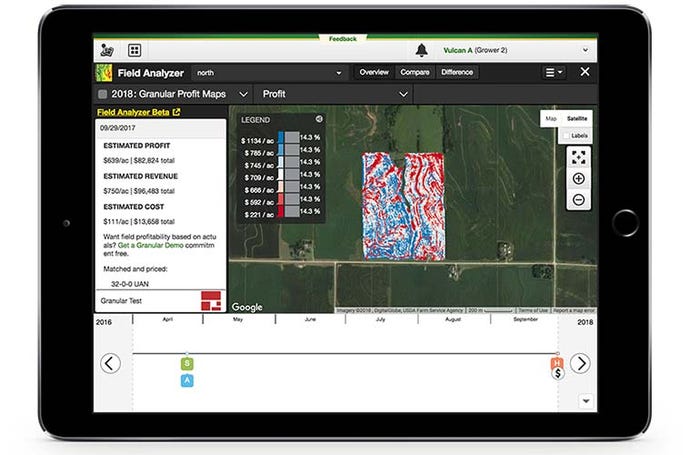
Last week I found myself on an interesting email thread with the distinguished ag economist Howard Doster, retired from Purdue but still actively engaged in sharing his insights and knowledge. He had penned an article about contribution margin as part of a theme on how to set cash rents for 2019.
In effect, he says: “If the contribution margin budget (expected future revenue from sales and government payments minus future costs-seed, fertilizer, chemicals, fuel, repairs, machine loss from use, and operating interest) comes out negative, don’t rent the farm, even at zero rent.”
But Howard also ‘threw in’ a big idea at the end of his initial draft: Why don’t we have yield monitors that also calculate profit on-the-go, in real time?
Not so long ago that would have been a dream, but data-driven software could do this today, provided farmers have robust information on production costs and expected price targets.
Talk about useful data! Imagine how your harvest would be if your monitor told you how much money you were making (or losing) on-the-go as you move from field to field. That monitor can spit out red and green flags, generating a profit map for every area of a field or farm.
Think about it. If certain suspect fields of a rented farm came up minus $20/acre you’d know exactly where to start the landlord renegotiation process. Or, you’d know which farms needed immediate attention, in drainage or some other yield-limiting factors.
Yes, ag tech companies are coming close. John Deere and Granular have collaborated to come up with Granular’s Profit Map software. It gets close to what we need. However, cost figures in this program come from Granular’s benchmark reports or aggregated median costs in the Granular customer database. It also uses USDA reports for expected revenue. In a perfect world a farmer would be able to plug in their own costs. And, if they have forward contracted production, they could plug in their own prices.

Granular’s Profit Maps tool helps farmers view average cost, revenue and profit map layers at the sub-field level in the John Deere Operations Center.
VRT wild card
Now throw in variable rate applications of fertilizer, chemical and seed. If you have that cost data on a map, you could see which areas of a field were making (or losing) money based not just on constant costs, but rather, specific variable costs and specific variable yield. Some high-yielding areas may result in high profit, but some low-yielding areas may result in high profit too if your VRT map shows you spent fewer input dollars in those spots.
Likewise, your yield result – and profit result – would help you further fine tune VRT hot spots for next year.
That’s a compelling case to add variable rate to your arsenal if you haven’t already done so.
Obviously other factors come into play, like machine use, spreading costs over more acres, weather factors, or which field got planted or harvested last. Granular’s program does not include equipment costs.
Such real-time data would be useful and eye-opening, especially if you had a couple years of history to establish trends.
What do you think?
The opinions of the author are not necessarily those of Farm Futures or Farm Progress.
About the Author(s)
You May Also Like






